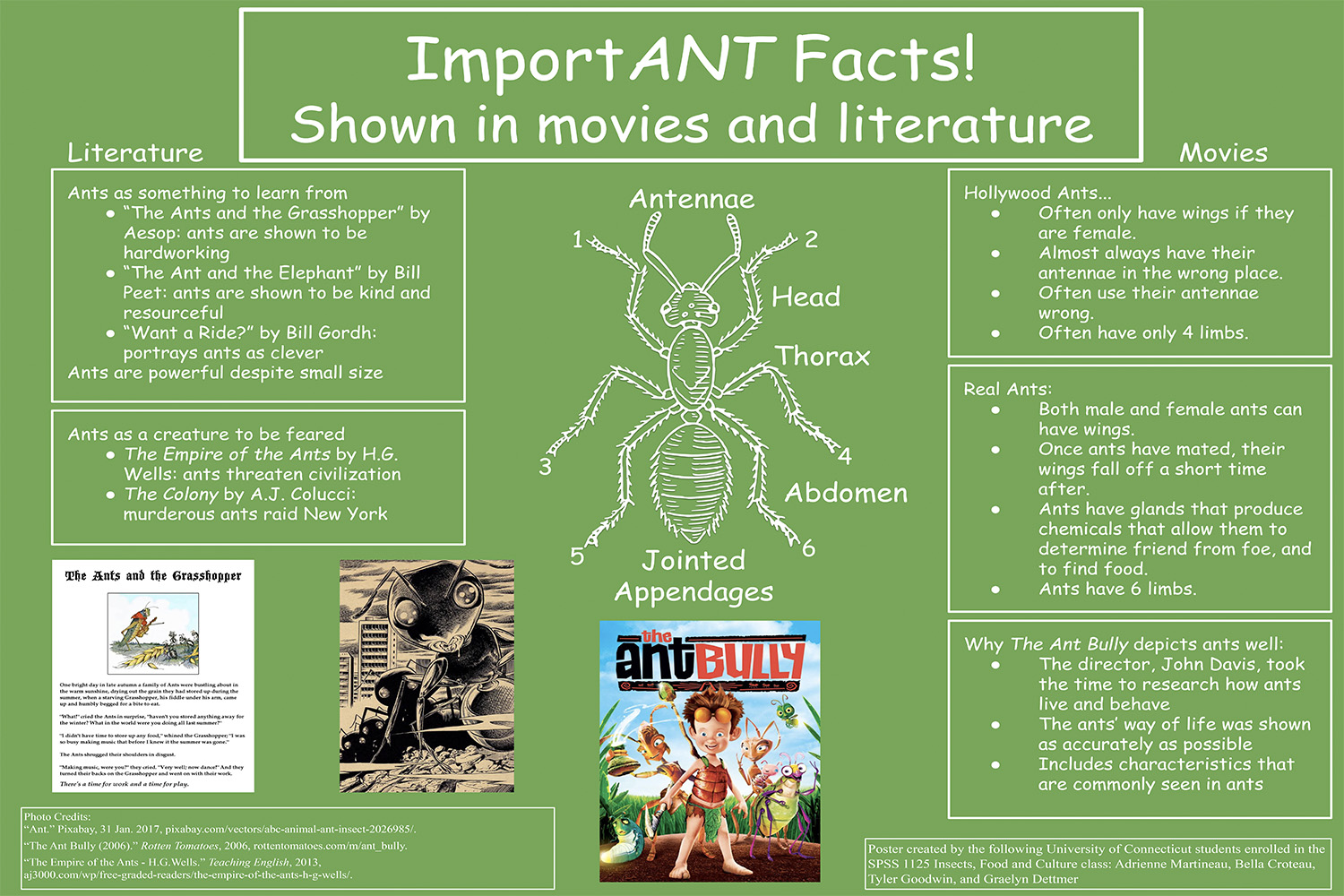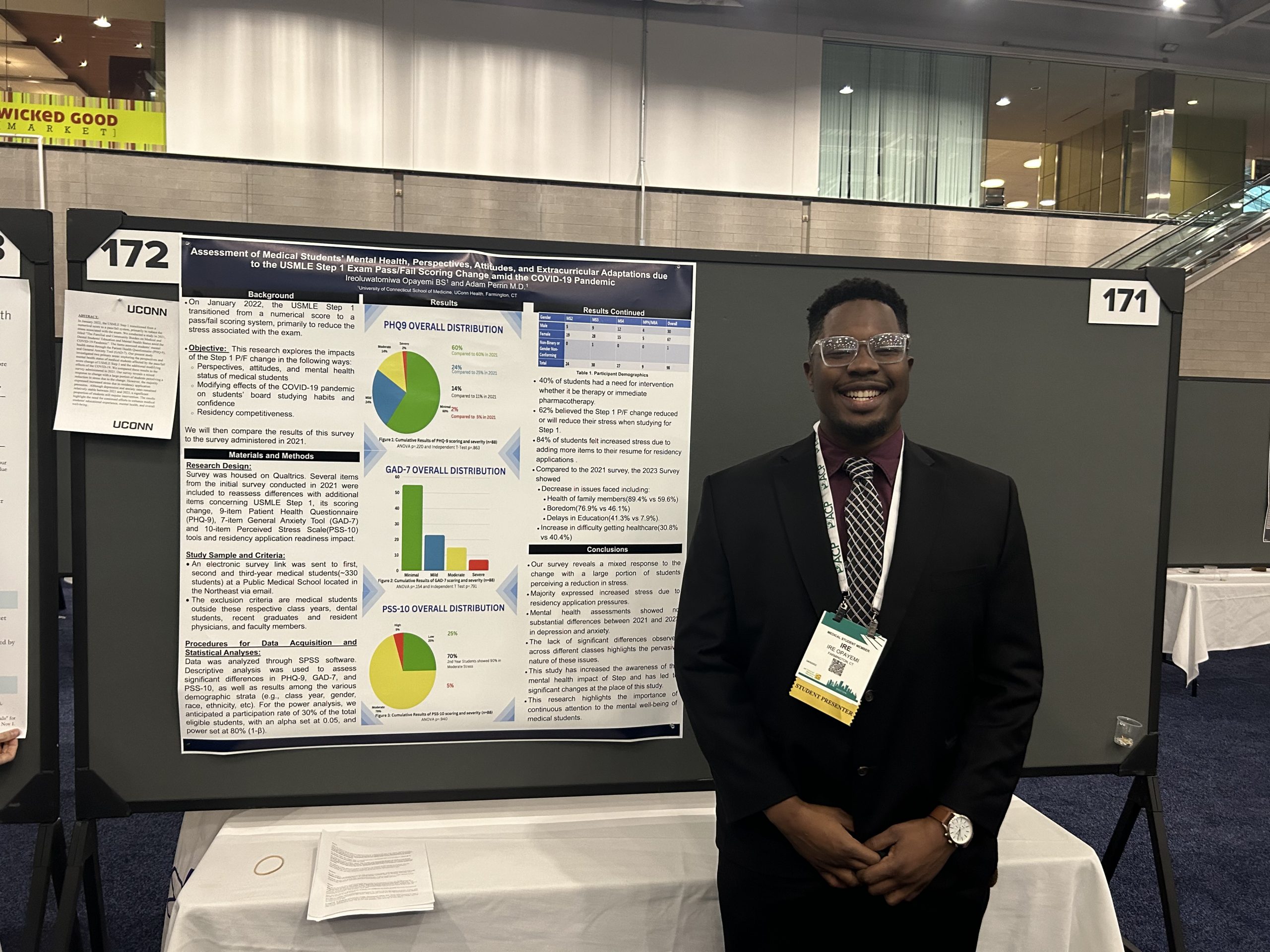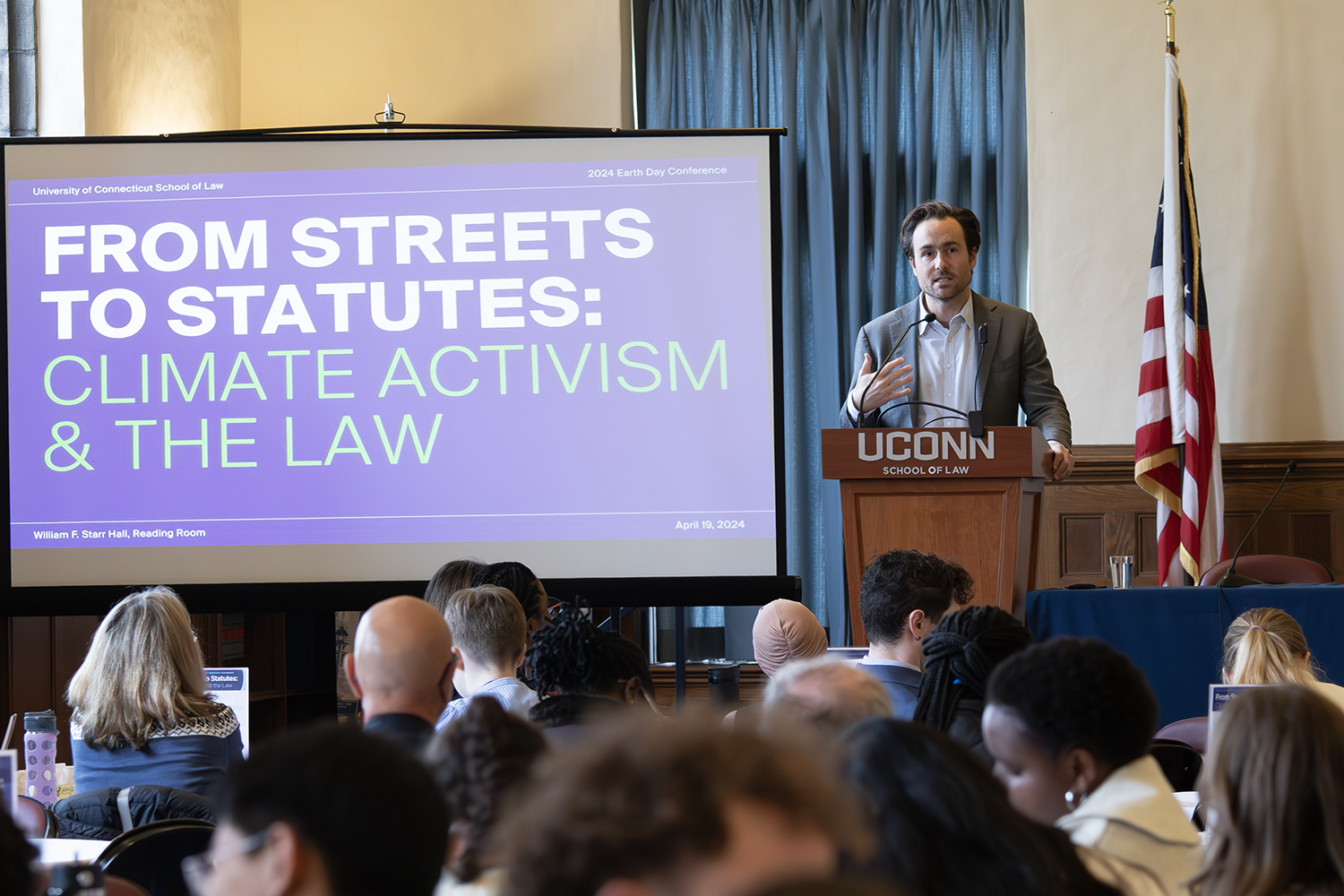Ana Legrand’s course Insects, Food and Culture (SPSS 1125) explores the role of insects in various domains, including art, nutrition, health and biology. Legrand, assistant extension professor in the Department of Plant Science and Landscape Architecture, aims to inspire students to think about insects in a more positive light while also teaching them about pest management. “I want to make sure that students appreciate that insects aren’t always bad players. There are many benefits that we get from them,” she says. These benefits range from insects’ role in inspiring technology to their importance in medicine, arts and literature.
SPSS 1125 students learn about insects’ importance in different parts of the world. For example, in Mexico and Japan, insects are used for food and serve as an important source of sustainable protein. This is perhaps one of the most promising uses of insects in the future. Legrand’s course also touches on public health issues involving insects’ role as vectors of disease, for instance in the spread of malaria and eastern equine encephalitis.
Legrand has taught the course since 2006, but she has recently revised it to include a service-learning initiative in which students partner with a local organization to share their new knowledge with the community. The course includes a creative component in which students create an educational poster that explores a topic related to the roles insects play in the ecosystem. Because the course attracts students from all majors, the posters are diverse. The results of the poster project is what motivated Legrand to add the service learning initiative. “I wanted to these projects observable and accessible to the community,” says Legrand. “As they learn about insects, students can share their knowledge and creativity with members of the community.” The service learning component is aimed at addressing widely held misinformation regarding insects, an issue Legrand says is particularly important as there is currently a decline in insect populations across the globe.
During the fall 2019 semester, the community partner was the Willimantic Public Library, which showcased the students’ posters. Poster topics included insects and technology, pollinators and health issues related to insects. Some posters were geared toward children and were displayed in the children’s section of the library. One, entitled Insects of the Night,educated children on insects that can be seen and heard at night, such as fireflies and crickets. Another focused on the biology of spiders and how they appear in literature.
Another service learning activity was traveling to local elementary schools to teach children about insects through demonstrations and games. For example, beetle races and posters provided featured information on pollinators and insect metamorphosis. Says Amanda Salazar, a senior majoring in, who took the course in fall 2019, “The most rewarding part was seeing the excitement in the children’s faces. They were so eager to learn and participate in our activities.”
Legrand’s Insects, Food and Culture reaches far beyond the boundaries of the classroom to share course learning with the local community. The opportunity to travel outside of the classroom and engage with the community is a memorable and rewarding aspect of the course. Undergraduates from a variety of majors benefit from the multifaceted educational experience they will have in Insects Food and Culture.



